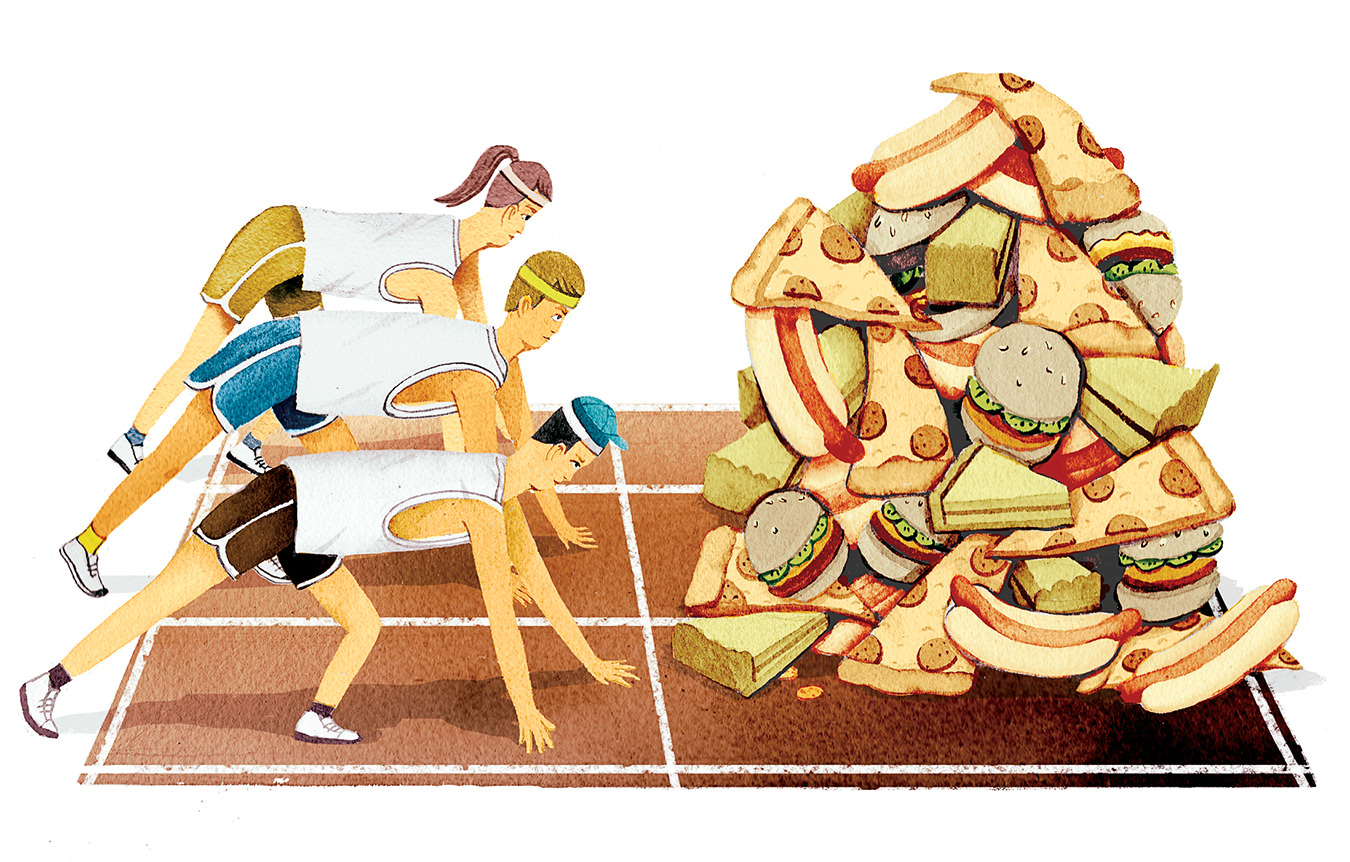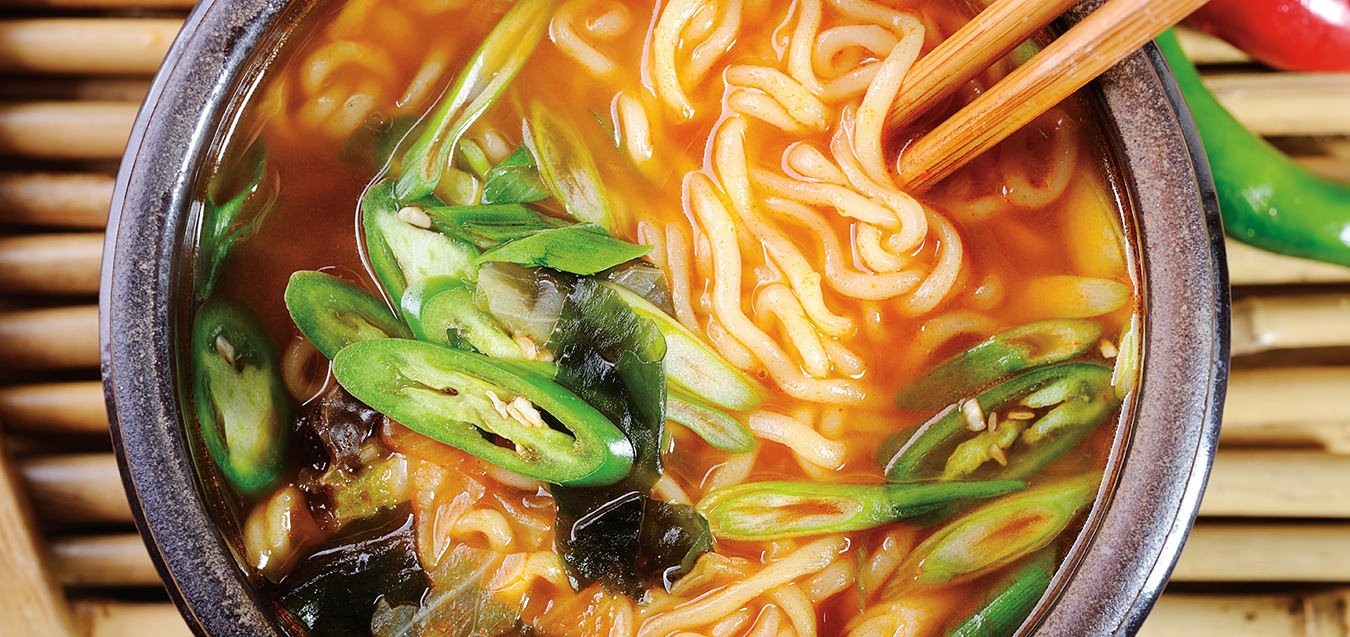Gluttony of Sport
The bizarre world of competitive eating.

There have been times when Meredith “Deep Fried Diva” Boxberger is shovelling down a monstrous 72-ounce steak and she thinks, “How’d I ever get to be doing this?” It’s a question often asked of the athletic, 28-year-old competitive eater from Barrie, Ontario. It is also a common query for Matt “Megatoad” Stonie, 21, of San Jose, California. He holds world records for separately downing 268 potstickers and 31 slugburgers (deep-fried hamburgers), each in 10 minutes. While you might imagine competitive eaters as sumo wrestler–sized humans, both Boxberger’s and Stonie’s measurements are identical: 5 feet 8 inches and 128 pounds. Both say they’re driven by adrenalin and the possibility of prize money, not by any abiding compulsion to eat. In fact, the advice Stonie has gotten from Major League Eating’s record-destroying superstar, Joey “Jaws” Chestnut, is this: “Don’t think of it as eating. In fact, don’t even think.”
Many people might assume that eating competitions have their origins in Brooklyn’s Coney Island with Nathan’s Famous Hot Dog Eating Contest, started in 1916 and still the world’s most famous gluttony event. Apple pie–eating contests at American county fairs have existed about as long, and scores of far weirder competitions have started since. Twenty-nine-year-old champion-eater Chestnut, for example, has at various venues consumed 9.5 pounds of deep-fried asparagus, 47 grilled cheese sandwiches, 102 tamales, 5.9 pounds of funnel cakes, and, this past summer, 69 Nathan’s hot dogs—each in 10 minutes and all world records.
This might sound excessive and, well, American—but Canadians aren’t off the hook. Historically, some early origins of competitive eating existed, at least as far as anthropologists know, among the Coast Salish people living along southwestern British Columbia’s Strait of Georgia. They even had a word for it: tsatlsqulalitut, or “eating power”. Over the centuries, challenges were issued by practised eaters, resulting in massive amounts of food devoured. Some of these accounts are likely apocryphal, like the tales of whole cows being consumed at one sitting. But the goal was similar to the gargantuan amounts of matzo balls or banana splits consumed today: to demonstrate one’s swallowing and stomach capacities in the face of doubting opponents.
Every competitor learns certain tricks to survive the contests and avoid what’s politely known in the fast-eating trade as “reversal”. Says Boxberger, “It’s a mental thing, like running a marathon. You push past the pain. You don’t give up.” Stonie, for his part, knows to avoid competitions that involve cow brains. Both admit that the worst comes afterward, as the stomach-stretching reality of what they’ve just done to their bodies sets in.
When they sit down to a traditional holiday feast, their families know that they’re in the presence of an eating monster. There are inevitable goads. But now it’s Mom’s turkey dinner, not guts or glory. It’s unwise, after all, to awaken the sleeping tiger.




